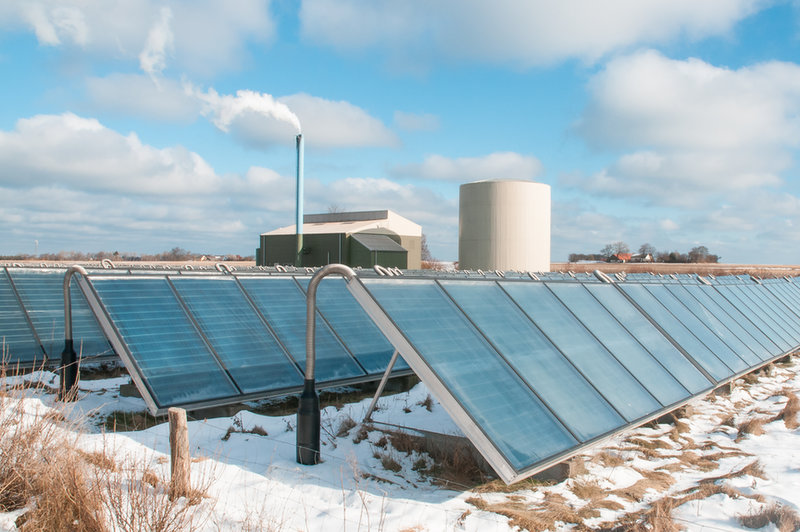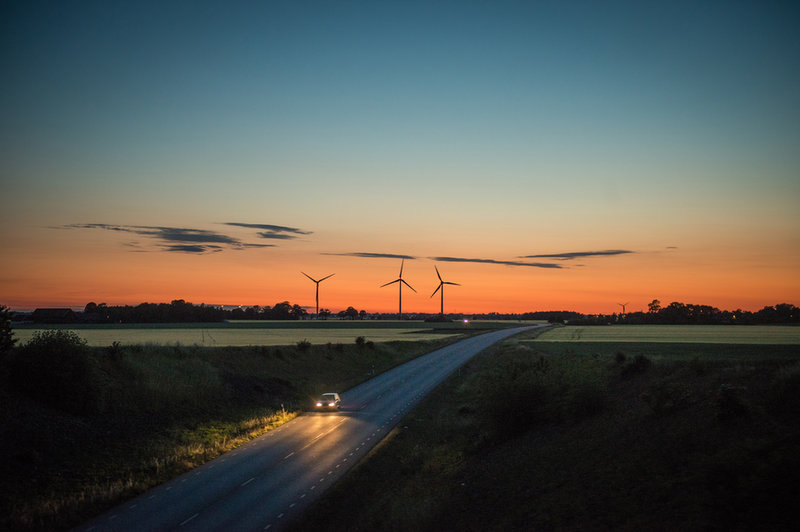ENERGY TRANSITION
Debate: should the EU embrace small or large-scale clean energy projects?
The European Union aims to achieve climate neutrality by 2050, a feat that will take a myriad of projects to achieve. Yet debate remains as to whether larger, continent-wide policies, or smaller, more regionally-specific programmes, are likely to help the EU meet these lofty ambitions. JP Casey and Matthew Hall discuss the two approaches.
JP Casey: Small-scale projects work and will be required to fulfil the needs of a diverse continent

C
onsidering the European Union’s (EU) ambitious plan of reaching carbon neutrality by 2050, large-scale, continent-spanning projects are an obvious solution to the bloc’s emissions. Indeed, research from the Institute for Advanced Sustainability Studies suggests that such a system would be cheaper to implement across Europe than a number of overlapping smaller-scale networks, raising the prospect of a single, pan-European renewable network.
However, such an approach brings a number of challenges, from the difficulties inherent in implementing a policy for countries with wildly different climate targets and energy infrastructure, to the fact that a single, comprehensive network may be ill-equipped to deal with an issue as complex and rapidly changing as climate change.
A more decentralised approach would enable different regions and individual countries to set their own targets and means of reaching them, which is vital considering the range of renewable commitments already in place across the continent, as well as diversity in the geography and political climates of the European countries.
According to EU data, Sweden boasted the largest share of its total energy supply from renewable power in 2018, with 54.6% coming from renewable sources. This was dramatically more than one of the least renewable-reliant countries, the Netherlands, which used renewable power for just 7.4% of its total energy production. Similarly, there is a significant imbalance in reliance on fossil fuels, with Poland’s annual coal production of 1.87 exajoules almost equal to that of the EU’s second- and third-most coal-reliant countries, Germany and Turkey, combined.
/ GDP increased by 28% while greenhouse gas emissions fell by 18%. /
The fact that different countries are at different stages of renewable development and investment also means that trying to implement single policies is likely to be ineffective, or at least inefficient. A 2017 report from the Nordic Council of Ministers, representing eight countries including Denmark, Finland, and Norway, described how the region’s long history of renewable investment means that many of the challenges facing the sector are related to ensuring maximum profitability in this long-entrenched sector. The report draws attention to the fact that, between 2000 and 2005, GDP increased by 28% while greenhouse gas emissions fell by 18%, as the region strove to decouple economic prosperity from fossil fuel production.
Conversely, the relatively new renewable infrastructure in place in southern Europe means that many of the challenges facing renewable investors demonstrate the financial viability of such projects in the first place. A 2019 report from the New Climate Institute found that this lack of renewable precedent in the region contributed to a vicious cycle of reluctance to invest, due to “high upfront capital intensity compared to conventional methods, which makes them also more sensitive to political and regulatory conditions”. Clearly, the challenges faced by the Nordic countries and southern Europe are so different that separate, more tailored solutions are likely to be the most effective solution.
Critically, there are examples of decentralised approaches already in place across Europe, with largely positive results. The report from the Nordic Council of Ministers highlighted how these countries were each investing in a different form of renewable power, and feeding back the lessons learned from these investments to one another to better improve the region’s overall energy efficiency.
From the Danish farming island of Samsø, whose 4,000 inhabitants have 70% of their energy needs met by renewable power, to the Nukissiorfiit solar-wind hybrid plant in Greenland, there have been a number of successful small-scale renewable projects, the scaling up of which is logistically more straightforward than implementing a single, continent-spanning policy.
Matthew Hall: Carbon neutrality requires ambition, but efficiency is a must – continental-scale projects are key

I
f an underlying principle of the EU exists, it is surely to promote cooperation, cohesiveness, and unity across national borders. You’d be hard pressed to find an issue more in need of that level of cross-border cooperation than climate change, and ambitious plans are required to limit global temperature increases and avert any irreversible ecological breakdown. In considering plans to achieve climate neutrality by 2050, the EU should be looking to larger, continental-scale renewable energy projects to drive this push.
One criticism often levelled at the EU is its propensity for bureaucracy, slowing down the decision-making process. There’s no time to be slow in addressing climate change, and one would expect the EU can get a handful of major projects over the line in a quicker timeframe than it can for a flurry of smaller-scale projects. But beyond that, there’s clear cost reduction potential in a continent-spanning supply system.
In a 2017 study, researchers identified how an optimised process for the distribution of larger projects could lower the total system costs of renewable electricity in Europe, with the most optimal distributions of renewable generation capacities able to reduce the total costs of backup, transmission, and renewable capacity simultaneously.
When looking at onshore wind projects in countries bordering the North Sea, optimal distributions can reduce average electricity costs by 11%-18%. Renewable electricity systems on larger geographic scales are going to be the more affordable option for the EU than a culmination of smaller, disconnected systems, and they also give suppliers more flexibility options to balance supply fluctuations.
/ The North Sea’s offshore renewable resources could cover 15% of regional demand by 2030. /
Fewer, larger projects would also concentrate energy generation in the most suitable locations, and facilitate the efficient use of resources on the European continent. The EU has 27 member states, with diverse climates and conditions that make some regions uniquely well-suited to certain forms of renewable power generation.
Take Denmark for example: wind covered a record 46.9% of Denmark’s power demand in 2019, and the Danish Parliament this year approved the construction of two “energy islands” for wind power generation. In initial proposals for such a project, it was claimed that an expansion of wind power in Denmark could increase Europe’s wind power capacity up to 54%. The country aims to make its electricity sector fossil-free by 2030. If Denmark’s wind infrastructure can be expanded to cater for a significant portion of the EU27 by 2050, why shouldn’t it?
The electricity generation potential of the North Sea is massive, and its prospects as a hub of continental renewable energy have been a dream for scientists and politicians alike for decades. A 2017 report by Navigant outlined that the North Sea’s offshore renewable resources could cover 15% of regional demand by 2030, with a large-scale connected grid enhancing market interconnections for countries bordering the North Sea, as well as bringing “substantial” societal benefits.
This kind of large-scale grid network is, in a word, complicated. The Navigant report states: “This push for interconnection requires the deployment of cutting-edge technologies, such as multi-terminal direct current connection platforms (possibly in harsh offshore conditions), as well as advanced control and protection strategies… Due to developing regulatory conditions and early adoption of technology, the first movers into a coordinated energy system architecture need to take up an additional risk element in their business case.”
Reaching carbon neutrality is no easy task, and climate breakdown won’t be avoided without ambition and risk-taking. With the right investment and serious commitment from the EU, though, continental-scale systems can present not just a less expensive solution, but a solution that can provide considerable economic benefit and connectivity across the Union.